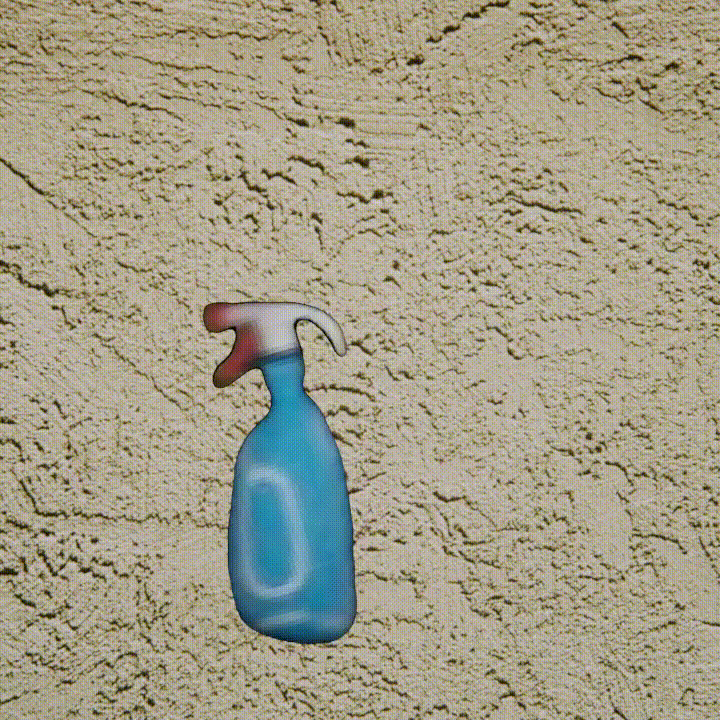BAGGY’S 99 CENT
AND MORE
Baggy’s 99 Cent AND MORE! is a 300 piece audio-visual collection featuring your favorite mini mart necessities.
Each token contains an animated 3d “niblet” and a custom sound signature, your own personal advertisement to appreciate the everyday.
BACKGROUND
Clusters of small stucco buildings are scattered throughout Los Angeles. Home to businesses such as grocery stores and 99 cent markets, these buildings feature a defining part of the Los Angeles landscape: the hand-painted sign.

These signs advertise bleach, milk, dish soap, and other common household items. Each rendition varies in its level of accuracy and abstraction, so that the repeated depiction of a bleach bottle, for example, lifts the item from its literal visual connotation to the level of universal symbol.

An item’s transcendence from its original commercial meaning is ironic in that it takes the abstracted characteristic that makes an item identifiable (a white bottle with a blue cap and blue label is bleach) from the trademarked visual branding for a company (the blue label is referencing a bottle of Clorox bleach).
This dialogue projects the everyday through the filter of corporate symbolism, making one inseparable from the other and abstracting both via their synthesis.
VISUAL ART

The images for the tokens are sourced from bb’s extensive archive of Google Street View screenshots, featuring everything from Fabuloso to ice cream to cigarettes. Each image is removed from its background, resized, and inflated using Monster Mash, an educational web tool for children to learn 3d animation. The resulting 3d object looks almost like a digital plushie, almost like its an item of merch for the original product. This object is then randomly animated in Blender via script.

The backgrounds for each token feature 35mm photographs of the stucco walls that play host to each sign. The low resolution of each source photo and the infantile effect of inflation lends each token an air of nostalgia for simpler times.
AUDIO
The audio for each token features aleatorically generated “sound signatures,” composed from sample categories such as “Nixon affirmations,” and Moog samples from Beaver and Krause’s The Nonesuch Guide to Electronic Music.
The sound signature as medium emerged in the 1970s as analog synthesizers, a relatively new invention, became more common in production studios. The most famous sound signature is the Coca-Cola bottle pop-fizz, created by Suzanne Ciani, a pioneering virtuoso of the Buchla synthesizer. Ciani used the profits from her commercial work to fund her career as a musician.
The contents for each sound signature were determined randomly through using a custom IChing generator. Composers such as John Cage and Yoko Ono regularly used the IChing to determine when sounds would play in their pieces and which sounds were used. Each signature contains 0-8 samples and may feature a vocal tag (taken from 1980s tv commercials, love dedications from the Art Laboe oldies show, and recordings of the Nixon tapes), ambient electronic samples (the Moog samples, CC0 youtube sound effects, and melody breakdowns from the 80s commercials), or some combination of the two.
0-sample tokens feature television test tones, the metaphorical “silence” of the television. The resulting audio is a soundbite reminiscent of a standard tv advertisement, but stranger, more abstracted, and sometimes absurd.
The combination of the audio signatures with the visual animations synthesizes disparate depictions of commercialism, transcending the everyday to symbolize the universal.
